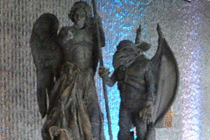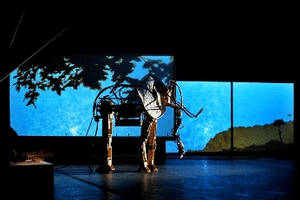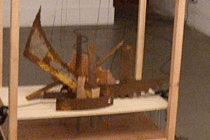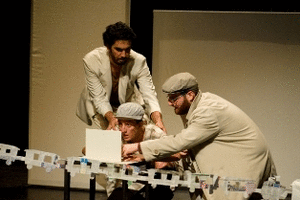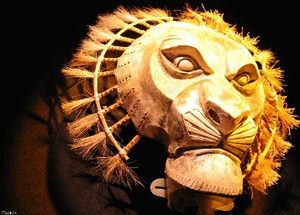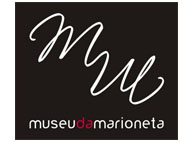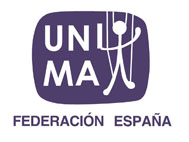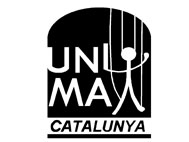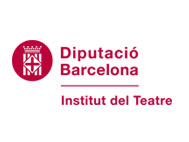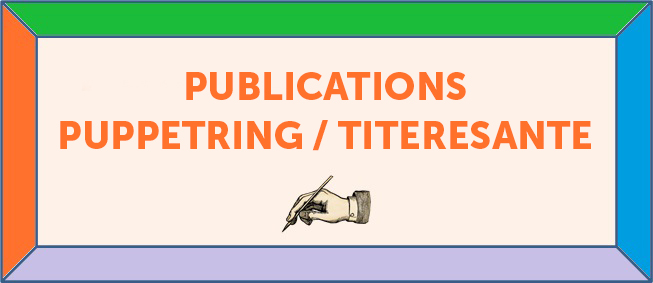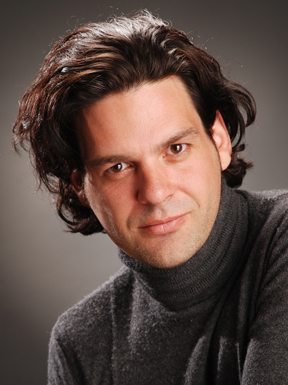
Éric Chalifour.
ManiganSes – Festival International des Arts de la Marionnette à Saguenay reached the end after its second block of top quality shows (an article will be published soon). Since Thursday, artists like Yael Rasooly, Théâtre à Bout Portant or the Compagnie S’appelle Reviens presented their recognized productions, among other must-see performances, presentations and acts. The show ‘Münchhausen’, by Les Machineries de l’Imaginaire, is closing today the 12th edition of the Festival. Its Artistic Director, Éric Chalifour, explains what it is made of.
Let’s begin talking about the main lines of your work.
Well, first, two requests are done to the Festival: one, the democratization and promotion of puppet arts, so it is important to reach a wide audience, and two, to push forward puppet theatre expressions. The goal is to be interesting both for general audience and specialists, and this is always there. Then I like to have a guideline, a specific subject for each edition. This year most of the shows are about the concept of fear, being afraid or feeling a similar emotion. I understand the Festival as a whole thing, we make the decoration of the cabaret or the outdoors set for shows, for example, always considering this subject as a guideline. (The work of the company Artefacts et Artifices has been along the festival a good example of this constant presence at the ManiganSes meeting point in Jonquière.) For me, it is important to find an aesthetic or artistic link between different shows to get a particular type of emotions.
ManiganSes is sponsorized by big companies and has a strong political support. How does it interfere in your job?
Indeed, we have all the support of Le Conséil des Arts et des Lettres du Québec and Canadian Heritage, and for them it is really important to advance in puppet theatre, to promote the artistic side of it and to have the best companies and shows here, pushing for this improvement. At Le Conséil they are really aware of the originality of the program, and we are evaluated by a group of experts and other artists among them. The expectations are so high for a festival like ours —the biggest in the region. Private partners are a bit different. For them it is necessary to attain to a high number of people, and a big portion of our budget come from private funds.
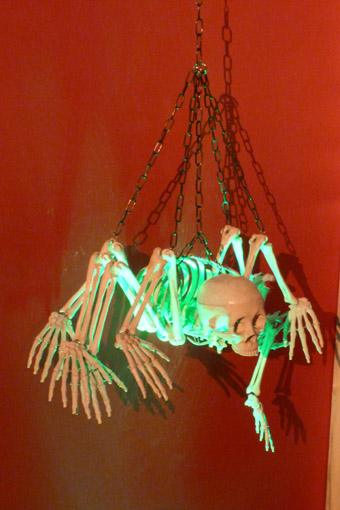
Inside the cabaret, an exhibition completed the guideline of this year's edition.
This year some shows explored quite complex subjects. Is there a didactic intention? What is the global message?
The shows we have seen these days have not a didactic goal —what we have seen is rather the result of interdiscipliarity. I like to demonstrate that many forms of art can be found in puppet theatre. More and more, puppeteers becomes actors. They don’t hide themselves anymore behind the puppet, now they are an integral part of the “puppety” object with their body. So for me it is important to show this duality, the tensions between the puppeteer and his object, or how they see each other, like a game involving two players. This is how one person and one object become just one same character, or one single person can become two, or many. (Good examples of these explorations are ‘Strict Minumum’, by Théâtre au Bout Portant, or ‘Daïdalos’, by La Tortue Noir.)
And how do general audiences in one side or specialists in the other receive shows like this?
Well this festival started 24 years ago, so people here have become more and more specialized. Thus here general audience knows this type of language and wants to see shows of this kind, where there is a research. And about specialized audience, they take it as an occasion to discover shows and companies, or to see unusual works that may be inspiring for they future. Maybe because of the Festival some talk about hermetic shows or shows that open our minds to a new perception of puppets art. What I think is they will continue to open newer ways! To me, a show like ‘Die Reise’ (read here), is very didactic and has a lot to see with the evolution of how we all comprehend the puppets art.
How are local companies involved in the Festival?
In Saguenay there are many companies (on a population between 150,000 and 200,000 inhabitants). The Festival International des Arts de la Marionnette has had a big impact in the region, to the point that some puppet groups exist because of the Festival. And further this, along the years they have developed a high level of expertise and creativity. There is a big difference with others regions in Quebec. Many of this local companies are in international tours: La Tortue Noire (read here), Théâtre à Bout Portant…, as example of companies participating in current edition. But here there many artists include puppet forms in their work or some others they only work on marionettes in its more traditional form.
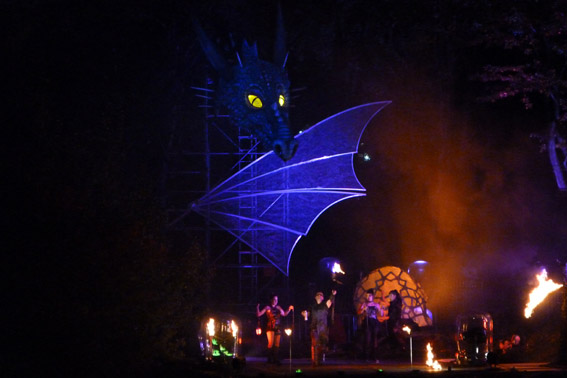
The show 'La quête du Dragon'.
You talk about interdisciplinarity, Christian Carrignon in his conference talked about the influence of cinema in objects theatre, you are a also an actor and a filmmaker… How real is the influence of cinema in the Festival?
In fact marionette is the all-possible art and cinema has, in its essence, something very close to puppets. Also, with the marionette you can do close up’s, so the way to focus on the story is pretty similar in one language and the other. I have discovered that being artistic director of ManiganSes. It has made me read and think a lot about it. This is why we also have a section dedicated to animated short films, in collaboration with another festival dedicated to short movies in Saguenay. Puppets are very present in animated cinema and since some years ago a work in parallel is being done regarding the creation of the image and the symbols, the meaning of objects…
We have seen other scenic languages as well: some acrobatics, juggling, life music of course, the exhibition of these little figures in the cabaret… How do you make the selection?
As I told you, there is a main subject in the selection of the shows, and in the case of fear, I considered the fears of our childhood. That is why there are all these images of little animals and these references to traditional fairy tales. And creating the ambient inspired in our childhood, we used a lot of red in the cabaret to remind a circus tent a little bit, and we made the show ‘La quête du Dragon’ in the same line. This creates the sensation that everything in the festival is in the same frame.
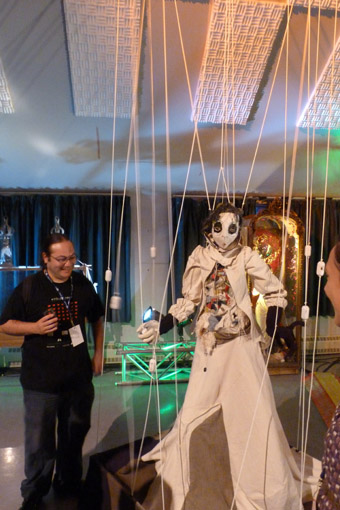
The cabaret was concieved for general audience and also as a meeting point of artists and organization team.
The Festival has 24 years and you have been the Artistic Director the three last editions. What is your contribution?
Indeed the Festival has much evolved and changed into contemporary forms. I have seen a lot of European companies that witness this same kind of evolution, but here in Quebec it is still too early to know exactly how strong it is, I think. Maybe here companies just become more hermetic, but the thing is nowadays when preparing the Festival you know people here is proud of having an eclectic panel. In the last three editions, ManiganSes has evolved a lot more in its global, not being a simple program of shows but rather an event. This is why I consider some acts are very important, like the conferences. It makes the content more complex and interesting for professionals. The cabaret is also important to create the climate of a group among the team members. I always try to bring a plus, and this is the most recent evolution. About the program, for me it is always important to include the tradition at the same time than more contemporary forms, to know where we come from and where we are going. And if I can find a show containing both traditional and contemporary expressions, dramaturgy, etc, it is even better.
And what about your own evolution?
I have evolved a lot! When I started as Artistic Director I had lot of experience in theatre, I had worked in classical and experimental theatre and had seen many puppet shows, but all my specific training in puppet arts have been here. I had seen but I had never really thought about the topic of marionettes or objects. Many readings and the festivals I have visited have taught me a lot! My knowledge of puppets at the beginning and now cannot be compared.
Did this changed your preferences?
No, but I can appreciate better the dramaturgy of a puppet show, even the more hermetic ones.
Can you preview new lines for the future?
I would really like to make a creation residency. To me, the progress and the improvement of artists pass through the organization of their research, through the possibility to go beyond their own imagination and their borders. I am convinced that contemporary forms will gain more and more space in the Festival, along with the request of democratization and the interest of the audience in puppets arts. There will be more shows that will be able to surprise the audience.
Is it possible to preview doing more co-productions or a creation residency in the current recession?
There is a co-production in the current edition, between Italian and Quebec artists, ‘Esprit es-tu là?’ Anyway I think there will be more and more necessary to combine artists from different countries. They will have to put together their realities to create something new. I think a Festival should show new creations, new proposals made by the combination of two countries or two companies that have different ways to work on their artistic impulses.
May it be difficult to find private sponsors for that?
In the future I think it all will work more and more through patronage. This is very few known in Quebec, but I think private corporations have to understand the importance of having a festival like ManiganSes here, in Quebec, and even more in the region, as it is the only one out of Montreal. The success in the future will depend entirely on these private funds, because subventions have stopped increasing at one point. Let’s hope that big corporations from Quebec will know to invest in the culture, because this is the identity of our country.
And may it be enough to go forth with all the future projects?
I don’t know! We will see… I suppose the patronage will start as a small thing and it’ll grow more and more.

